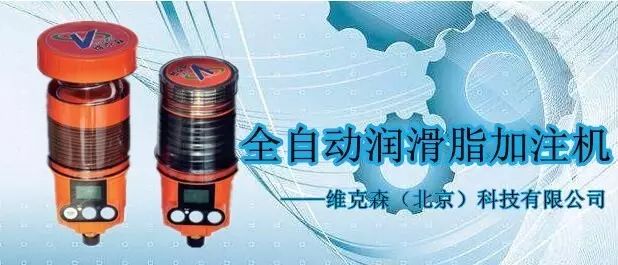
1. Types of Industrial Automation Instruments
Currently, industrial automation instruments mainly include flow instruments, pressure instruments, level instruments, temperature instruments, and online process analyzers. Flow instruments are further divided based on their measurement principles, including velocity method, volumetric method flow meters, direct method, derived method mass flow meters, and various types such as rotor type, velocity type, throttling type, and volumetric type. Pressure instruments are primarily used for measuring the pressure of powdered, high-temperature, and easily crystallizing media. Conventional pressure regulation systems utilize pressure transmitters to transmit signals for field measurement and control. Level instruments are mainly used for monitoring the levels of raw materials, semi-finished products, and finished products in industrial fields, including matrix vortex type, buoyancy type, magnetostrictive type, radar type, and more based on different measurement methods. Temperature instruments are used to measure and control the temperature at production sites or inside pipelines, often employing non-contact measurement methods. The application of fieldbus technology has automated temperature control. Online process analyzers are essential tools for automated management and control of chemical production and analysis processes, and they are typically used in conjunction with precision analytical instruments such as mass spectrometers and liquid chromatographs.
2. Current Development Status of Industrial Automation Instruments in China
Automation instruments are connected to the controlled equipment and analyze indicators such as surface temperature, output flow, and pressure through computers. They automatically judge and control data that exceed limits in real-time. In mechanical automation control, automation instruments are critical components for displaying indicator data, allowing for automatic recording of changes during mechanical operation, facilitating manual inspection. Due to the late development of industrial automation instruments in China, the industry is still in its early stages, and there is a significant gap compared to foreign counterparts. The market competitiveness of China’s industrial automation instruments is mainly due to the lack of technical expertise, with core technologies still imported from abroad, and the inability to fully convert imported technologies into domestic technologies. Moreover, the government has not prioritized the development of these industries or provided necessary support, leading some large enterprises to opt for foreign operational technologies due to their own limitations. In recent years, with the continuous development of the national economy, China has begun to adjust its industrial development policies to actively promote the development of industrial automation instruments. The manufacturing model of these instruments is changing, and some achievements have been made. Currently, China has mastered some core technologies in manufacturing common instruments such as temperature measuring instruments, display instruments, traditional flow instruments, and pressure measuring instruments, but the technical content of these products remains low, and high-end technologies still need development, requiring imports from abroad.
3. Fault Handling Methods for Industrial Automation Instruments
3.1 Establishing a Scientific Inspection System
During the fault resolution process for automation instruments, a comprehensive and systematic inspection is required, necessitating the establishment of a scientific inspection system to ensure that inspection personnel strictly adhere to relevant regulations and standards. The formulation of the inspection system typically considers the equipment attributes and operational standards. Inspections should not only occur during the instrument’s operational phase but also include regular preventive maintenance checks. Furthermore, management personnel must clarify roles and responsibilities, ensuring that every individual understands their basic duties and areas of jurisdiction. Inspection routes should be considered from multiple perspectives, ensuring that inspections occur at least twice daily. During inspections, management personnel should meticulously record the operational parameters of the automation instruments, promptly rectify any identified faults, and ensure the normal operation of the automation instruments.
3.2 Daily Maintenance
Strengthening the maintenance management of automation instruments in daily work can effectively prevent faults. To avoid issues related to aging and loosening of the equipment structure, periodic checks of the equipment framework are necessary. Given that different components have varying lifespans, timely replacement of parts should be performed according to technical specifications, and detailed records of equipment components should be maintained. When managing electrical equipment, proper ventilation should be ensured to minimize waste accumulation around the equipment. Additionally, before each use, power connections should be checked, and cleanliness of the automation instruments should be maintained through regular cleaning.
3.3 Maintenance of Circuit Boards and Chips
During the repair phase of automation instruments, issues may arise due to improper maintenance of circuit boards and chips. Circuit boards and chips are critical components of automation instruments; faults in these can render the entire instrument inoperable and may have serious consequences. If circuit board issues are detected, repair personnel should replace or repair them based on specific conditions. Generally, circuit boards are primarily connected by circuits, requiring regular inspections and repairs by maintenance personnel to quickly resolve and rectify any faults, ensuring the normal operation of automation instruments. If a chip is damaged, it may cause problems for the entire instrument. Frequently faulty chips should be replaced to prevent further loss. Therefore, comprehensive inspections should be conducted during the maintenance of automation instruments, and if any damage occurs, repair personnel should be notified immediately to minimize losses and improve economic efficiency.
3.4 Maintenance of Key Equipment
Strengthening the maintenance management of key equipment in automation instruments is a crucial measure for maintaining these devices. A key component of automation equipment is the closed-loop automatic control system. When maintaining this system, it should first be switched to manual mode, and changes to the position of the control valve should be based on process specifications. Additionally, careful observation of the feedback measurement variations is necessary for effective fault resolution. When adjusting complex systems within the equipment, maintenance personnel should adjust the zero-setting spring in the instruments to ensure uniform output of the instrument signals. Furthermore, when maintaining electric transformers, it is essential to ensure that the positions of aluminum plates and planar coils are correct.
Conclusion
In summary, the development of the economy and continuous advancements in science and technology have driven the application of automation instruments across various industries, effectively improving work efficiency and ensuring the safe and efficient operation of machinery. Therefore, relevant personnel must enhance fault detection during the application of automation instruments and implement effective maintenance measures based on the type of faults. Only in this way can we fundamentally guarantee the lifespan of the equipment and reduce unnecessary economic expenditures for enterprises.
For more information on equipment management activities, please follow “Equipment Management Training”


